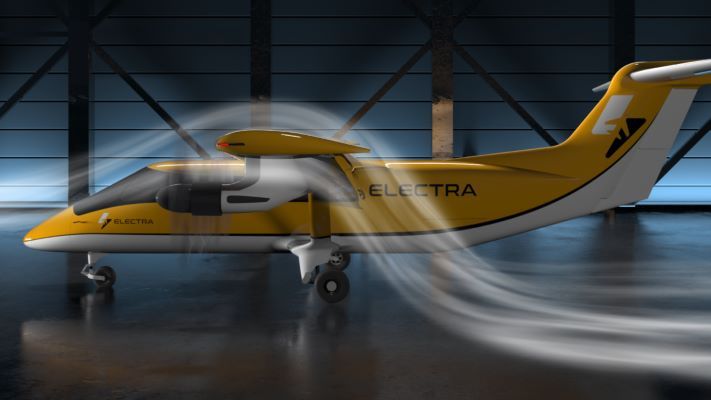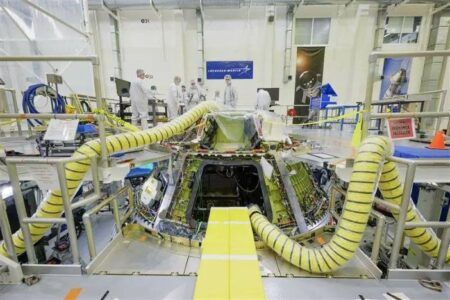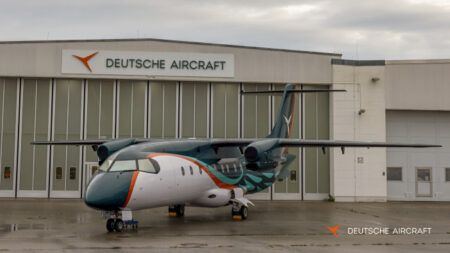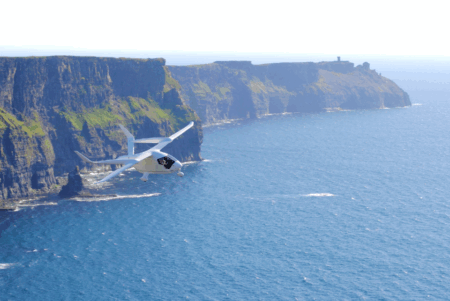Electra has completed powered wind tunnel testing for its nine-passenger EL9 Ultra Short hybrid-electric aircraft at MIT’s Wright Brothers Wind Tunnel, with the results confirming the blown wing design delivers the high lift needed for take-off and landing in 150ft, the company said.
Using a 20% scale model of the EL9 wing, the tests demonstrated lift coefficients greater than 20, which is seven times greater than the 2.5-3 range typical of unblown wings. The results validate the potential of electric blown lift to increase the wing’s lifting capability at low speeds, enabling safe take-off and landing operations from soccer field-sized spaces.
“This is a major milestone in demonstrating the EL9’s ability to take off and land in spaces never before possible for fixed-wing aircraft,” said Chris Courtin, director of technology development at Electra. “Verification of the effectiveness of the optimized EL9 wing shows that the EL9 is both transformative and practical.”
The blown lift system uses electric motors to blow air over the EL9’s wing and large flaps to create ultra short takeoff and landing capabilities. The technology enables the wing to maintain sufficient lift at much lower airspeeds than conventional wing designs, expanding operational flexibility for various mission profiles.
The tests confirmed the EL9’s approach and landing profile meets all Federal Aviation Administration (FAA) Part 23 safety and stall margin requirements, ensuring safe and predictable handling at slow speeds. This validation addresses critical certification requirements for the aircraft’s operational envelope.
The US Army collaborated with funding for the testing through a Small Business Innovation Research contract as it explores the potential for Electra’s blown wing technology and dual-use hybrid-electric aircraft to expand military capabilities. The collaboration demonstrates interest in the technology’s defense applications.
Electra is refining the design of its EL9 production aircraft based on these findings and ongoing flight tests of the EL2 demonstrator aircraft. The company aims to advance development of what it describes as a quieter, more efficient, and sustainable solution for regional air mobility.
Electra says the 150ft take-off distance represents 10% of the distance typically required by conventional aircraft of the same size and that quieter operation will open up routes and locations that currently lack aviation infrastructure due to space and noise restrictions.
According to Electra it now has more than 2,200 pre-orders for the EL9 from more than 50 operators worldwide, valued at more than US$10 billion. The first test flights are planned for 2027, with certification and commercial service entry anticipated in 2029 under FAA Part 23 regulations.
The company’s investors include Lockheed Martin, Honeywell, and Safran. Contracted customers include NASA, the US Air Force, US Army, and US Navy.





